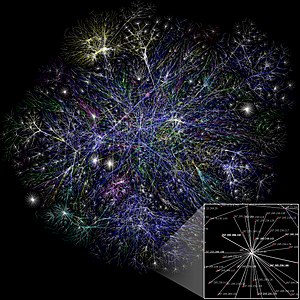
- Image via Wikipedia
In computing, the vision always precedes the reality by a decade or more.
The pattern has held true from the personal computer to the Internet, as it takes time, brainpower and investment to conquer the scientific and economic obstacles to nudging a game-changing technology toward the mainstream.
The same pattern, according to scientists in universities and corporate laboratories, is unfolding in the field of sensor-based computing. Years ago, enthusiasts predicted the coming of “smart dust” — tiny digital sensors, strewn around the globe, gathering all sorts of information and communicating with powerful computer networks to monitor, measure and understand the physical world in new ways. But this intriguing vision seemed plucked from the realm of science fiction.
Smart dust, to be sure, remains a ways off. But technology’s virtuous cycle of smaller, faster and cheaper has reached the point that experts say sensors may soon be powerful enough to be the equivalent of tiny computers. Some ambitious sensor research projects provide a glimpse of where things are headed.
Last year, Hewlett-Packard began a project it grandly calls “Central Nervous System for the Earth,” a 10-year initiative to embed up to a trillion pushpin-size sensors around the globe. H.P. researchers, combining electronics and nanotechnology expertise, announced in November that they had developed sensors with accelerometers that were up to 1,000 times more sensitive than the commercial motion detectors used in Nintendo Wii video game controllers and some smartphones.
Related articles by Zemanta
- A Central Nervous System for Earth: HP’s Ambitious Sensor Network (readwriteweb.com)
- Smartphone Sensors Pose Security Threat (informationweek.com)









